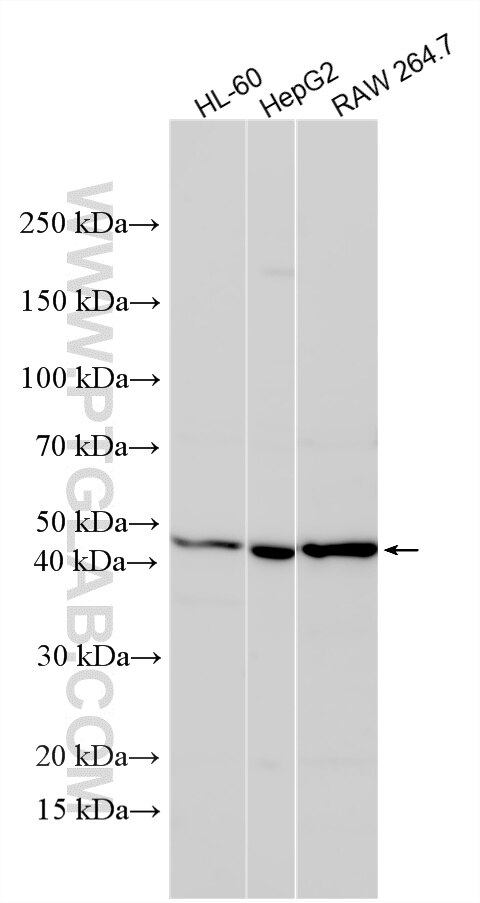Validation Data Gallery
Tested Applications
| Positive WB detected in | HL-60 cells, HepG2 cells, RAW 264.7 cells |
Recommended dilution
| Application | Dilution |
|---|---|
| Western Blot (WB) | WB : 1:500-1:1000 |
| It is recommended that this reagent should be titrated in each testing system to obtain optimal results. | |
| Sample-dependent, Check data in validation data gallery. | |
Product Information
15921-1-AP targets ERCC8 in WB, ELISA applications and shows reactivity with human, mouse samples.
| Tested Reactivity | human, mouse |
| Host / Isotype | Rabbit / IgG |
| Class | Polyclonal |
| Type | Antibody |
| Immunogen |
CatNo: Ag8734 Product name: Recombinant human ERCC8 protein Source: e coli.-derived, PGEX-4T Tag: GST Domain: 1-205 aa of BC009793 Sequence: MLGFLSARQTGLEDPLRLRRAESTRRVLGLELNKDRDVERIHGGGINTLDIEPVEGRYMLSGGSDGVIVLYDLENSSRQSYYTCKAVCSIGRDHPDVHRYSVETVQWYPHDTGMFTSSSFDKTLKVWDTNTLQTADVFNFEETVYSHHMSPVSTKHCLVAVGTRGPKVQLCDLKSGSCSHILQGIFILFQTATTLSKRFNKKKRY 相同性解析による交差性が予測される生物種 |
| Full Name | excision repair cross-complementing rodent repair deficiency, complementation group 8 |
| Calculated molecular weight | 396 aa, 44 kDa |
| Observed molecular weight | 42 kDa |
| GenBank accession number | BC009793 |
| Gene Symbol | ERCC8 |
| Gene ID (NCBI) | 1161 |
| Conjugate | Unconjugated |
| Form | |
| Form | Liquid |
| Purification Method | Antigen affinity purification |
| UNIPROT ID | Q13216 |
| Storage Buffer | PBS with 0.02% sodium azide and 50% glycerol{{ptg:BufferTemp}}7.3 |
| Storage Conditions | Store at -20°C. Stable for one year after shipment. Aliquoting is unnecessary for -20oC storage. |
Background Information
ERCC8 (also known as Cockayne Syndrome A protein, CSA) is a critical nuclear protein that serves as a specific adapter component of the CRL4ᴱᴿᶜᶜ⁸ ubiquitin ligase complex. Its primary function is to play a central role in the transcription-coupled nucleotide excision repair pathway, specifically recognizing and repairing the template strands of actively transcribed genes damaged by factors such as ultraviolet radiation. Mutations in the ERCC8 gene cause Cockayne syndrome, an autosomal recessive disorder characterized by severe photosensitivity, premature aging, neurodevelopmental abnormalities, and sensorineural hearing loss. This demonstrates that ERCC8 is essential for maintaining transcriptional fidelity, neuronal survival, and combating oxidative stress. Therefore, ERCC8 is not only a key factor in DNA repair but also an important molecule for studying mechanisms of premature aging and neurobiology.

